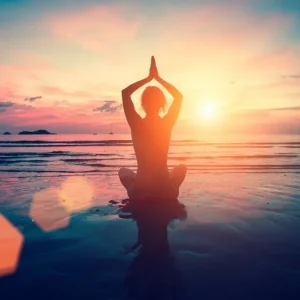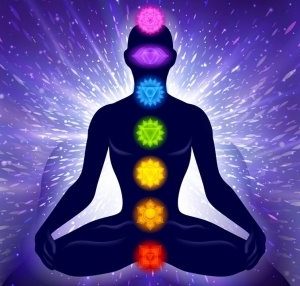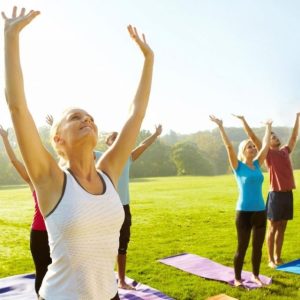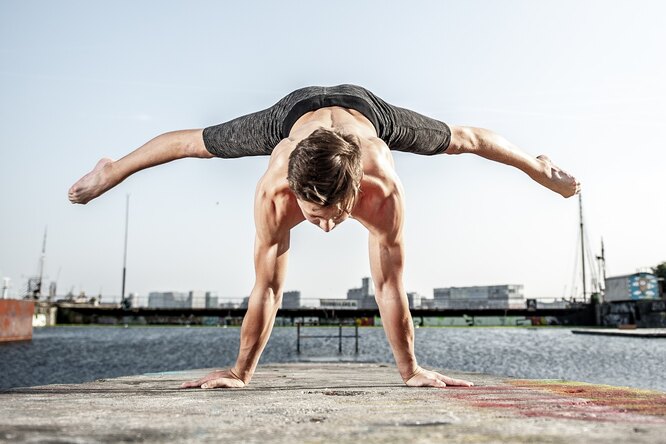Yoga
Founder of gymnastics:
Patanjali

Yoga is an ancient practice with deep roots in Indian philosophy and is not considered a sport in the traditional sense. It includes exercise, breathing practices and meditation to achieve balance between body and mind. It is impossible to consider one person the founder or creator of yoga in the form in which we know it today, since it has developed over many centuries. However, the key figure in the systematization of yoga was Patanjali, who compiled the Yoga Sutras about 2 thousand years ago. This text is still considered fundamental in the practice of yoga.

Since yoga is not a competitive sport in the traditional sense, there are no official world championships under the auspices of international sports organizations, as in other sports. However, various yoga championships and festivals are held where practitioners can demonstrate their skills.

B.K.S. Iyengar
one of the most famous yoga teachers in the world, founder of Iyengar yoga, a system that focuses on the accuracy of performing asanas using various props.
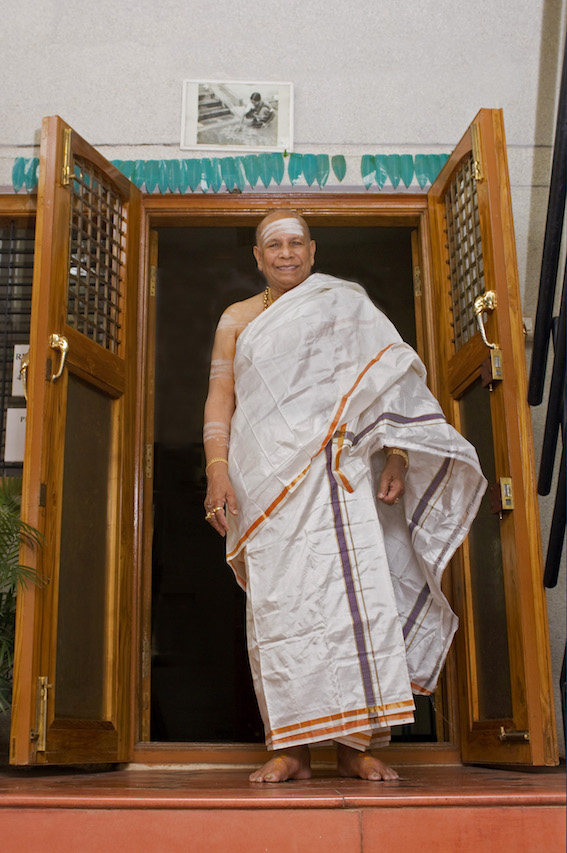
Pattabhi Jois
one of the greatest gymnasts in history, multiple Olympic champion and world champion.

Tiranga Swami
the legendary yogi, known for his strength and flexibility, made significant contributions to the development of hatha yoga.
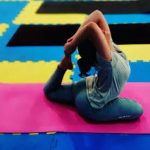
Leila Mohammadi (Iran)
Leila Mohammadi is a well-known Iranian yoga teacher who popularizes this sport in Iran and other countries in the region. She is the author of several methods for beginners and often speaks at international seminars.
Yoga [K. 1] (from Sanskrit योग, yoga IAST — “union”, “subjugation”, “harnessing”) [1][2] — system of psychopractice; spiritual, mental and physical practical method of changing consciousness, body and psyche. A collection of various Indian spiritual and physical methods. Yoga is practiced by both non-religious people and members of various branches of Hinduism and Buddhism in order to control the psyche and psychophysiology of an individual in order to achieve a chosen mental and spiritual state. Yoga is an esoteric system in the Indian tradition that carries the archetypal idea of spiritual development [3]. Known, at least, since the II century. to n. is.
The goal of yoga is to change the ontological status of a person in the world [3].
Yoga entered the Western world in the late 19th and early 20th centuries and gained significant popularity in the 1980s as a system of physical exercises[4], although in India it is not so much physical exercises as a meditative and spiritual practice[5].
In India, it is believed that the practice of yoga has a healing effect, and that yoga helps a person overcome various ailments. Numerous studies have tried to establish the effectiveness of yoga as an additional means in the treatment of cancer, schizophrenia, asthma and diseases of the cardiovascular system[6][7]. The results did not give an unequivocal answer[6][7]. On December 1, 2016, UNESCO included yoga in the list of intangible cultural heritage [8].
History of yoga[ed. | ed. code]
The answer to the question of when yoga was born is lost in antiquity. Asceticism is already mentioned in the Vedic Samhitas, and ascetic practice (tapas) is mentioned in early commentaries on the Veda Brahmanas. However, yoga could have originated even earlier, in pre-Vedic India. Seals from the Indus civilization found in Pakistan show people in meditating positions, which can be seen as evidence in favor of such a hypothesis, although there is no conclusive evidence.
The technique of attaining higher states of consciousness was developed in the traditions of the Shramanas and the Upanishads.
Chakras
There is no unequivocal evidence for the existence of meditation in pre-Buddhist Brahmanical texts. The first texts that describe meditation techniques belong to Buddhist literature. In Hindu texts, the term yoga first appears in the Katha Upanishad, where it refers to the control over the senses and a higher state in which the activity of the mind ceases. Further development of the concept of yoga is found in the Upanishads of the medieval period, in the Mahabharata, in particular in the Bhagavad-gita and in the Yoga Sutras of Patanjali (2nd century BC).
Patanjali is considered the founder of yoga philosophy. Although Patanjali himself does not use the term raja, the system he describes is known as Raja Yoga (Royal Yoga). The essence of yoga is given in the second sutra:
Yoga is about prohibiting change in consciousness.
The use of the word nirodga (prohibition) indicates that Patanjali was familiar with Buddhist ideas and incorporated them into his system, but does not prove Patanjali’s affiliation with any religious school. There are also other translations and commentaries on the Yoga Sutras of Patanjali[9].
Patanjali’s sutras became the basis of a system called Ashtanga Yoga (Yoga of the Eight Steps): yamas, niyamas, asanas, pranayamas, pratyagaras, dharanas, dhyanas, and samadhis.
From the point of view of this school, the highest attainable state of consciousness does not reveal the illusory diversity of the world. Raja-yoga considers the everyday world to be real, and therefore the highest state of consciousness is only the discovery of oneself, and not a single universal absolute for all people.
The Bhagavad Gita uses the term yoga in many senses. Her sixth chapter is entirely devoted to the practice of yoga, including meditation. The Bhagavad-gita describes three systems of yoga: the path of action (karma-yoga), the path of devotion (bhakti-yoga) and the path of knowledge (jnana-yoga).
Philosophy[ed. | ed. code]
The philosophy of yoga is based on the oldest philosophical system of India, Sankhya, accepts its metaphysics and theory of knowledge, differing from it in the belief in the universal spirit of Paramatma, in other words, in God. Yoga, like Sankhya, is dualistic – the world, from its point of view, has two primary elements – ideal (purusha) and material (prakriti). The ideal primordial basis of the world is pluralistic, that is, it consists of individual souls (jiva). Material prakriti is one and permeates everything, connecting the individual soul with the human body and thoughts. The goal of yoga is to free oneself from this attachment, and different schools and schools of yoga offer their own methods for achieving this state.
Jiva is pure consciousness, but through ignorance it associates itself with mind (citta), which is a product of prakriti, and in which sattva dominates rajas and tamas. The chitta itself has no consciousness, but because of its proximity to the jiva it reflects it, and therefore appears to be an intelligent and gifted consciousness. Patanjali argued that liberation can be achieved through direct knowledge of the difference of one’s self from the physical world, specifically from one’s body, from one’s mind, and from one’s ego (viveka-jnana). This can be achieved only by limiting the functions of the body and feelings and thoughts, while maintaining transcendental self-awareness.
Unlike Sankhya, the philosophical system of yoga is theistic. God (Paramatma) is considered the highest object on which thought can be concentrated. God is a perfect being, eternal and omnipresent, with perfect knowledge and without defects. Yoga proves the existence of God with the following argument: anything that has degrees must have a maximum. The existence of different degrees of knowledge necessarily means the existence of perfect knowledge. He who has perfect knowledge is a god. The development of the world is due to the union of Purusha and Prakriti, and the cause of decay is the cessation of such union. But conjugation is not characteristic of either prakriti or purusha. Therefore, there must be a supreme being who would establish a connection between prakriti and purusha in accordance with the moral sihas of individual souls.
Several yoga techniques:
Asanas
physical poses that strengthen the body, improve flexibility and concentration.
Pranayama
breathing techniques aimed at controlling vital energy through breathing regulation.
Dhyana
meditation, the practice of focusing the mind to achieve inner peace and understanding.
